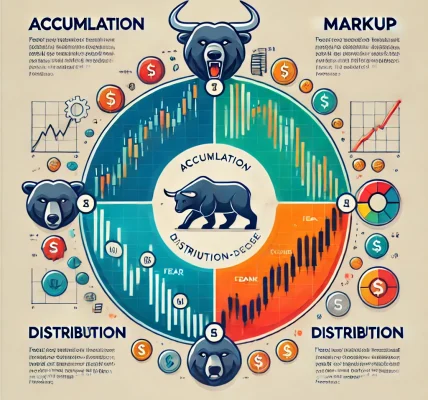Investing in the stock market offers a variety of opportunities to grow wealth, but choosing the right investment approach is crucial. One of the most debated topics among investors is whether to invest in Exchange-Traded Funds (ETFs) or individual stocks. Each option has its pros and cons, and the right choice depends on an investor’s risk tolerance, investment goals, and market knowledge. In this article, we will explore the key differences between ETFs and individual stocks to help you make an informed decision.
What Are ETFs and Individual Stocks?
Exchange-Traded Funds (ETFs)
ETFs are investment funds that hold a diversified portfolio of assets, including stocks, bonds, or commodities. They trade on stock exchanges just like individual stocks. ETFs are managed by professional fund managers and provide exposure to a wide range of industries, indices, or themes.
Individual Stocks
Individual stocks represent ownership in a single company. When you buy a stock, you become a shareholder and own a fraction of that company. Stocks are traded on stock exchanges, and their prices fluctuate based on company performance, market trends, and investor sentiment.
Key Differences Between ETFs and Individual Stocks
| Feature | ETFs | Individual Stocks |
|---|---|---|
| Diversification | High diversification, reducing risk | Concentrated investment in one company |
| Risk | Lower risk due to diversified assets | Higher risk as performance depends on one company |
| Management | Professionally managed | Requires personal research and decision-making |
| Cost | Typically lower fees, but expense ratios apply | No management fees, but trading fees may apply |
| Liquidity | High liquidity, trades like stocks | Liquidity depends on stock demand and supply |
| Volatility | Less volatile due to diversification | Can be highly volatile based on company performance |
| Returns Potential | Moderate returns, steady growth | Potential for high returns but also high losses |
Pros and Cons of Investing in ETFs
Pros:
- Diversification – ETFs reduce risk by holding multiple assets, making them ideal for conservative investors.
- Lower Costs – Most ETFs have lower expense ratios compared to actively managed funds.
- Passive Management – ETFs often track indices like the S&P 500, requiring minimal active decision-making.
- Liquidity – ETFs can be bought and sold throughout the trading day like stocks.
- Transparency – Most ETFs disclose their holdings daily, allowing investors to see what assets they own.
Cons:
- Limited Growth Potential – Since ETFs are diversified, they may not deliver the same high returns as successful individual stocks.
- Expense Ratios – While low, ETFs do have management fees that slightly impact returns over time.
- Less Control – Investors cannot pick and choose specific stocks within an ETF.
Pros and Cons of Investing in Individual Stocks
Pros:
- High Growth Potential – Investing in successful companies can lead to significant returns.
- Full Control – Investors can select specific companies based on their research and strategies.
- No Management Fees – Unlike ETFs, buying individual stocks does not involve expense ratios.
- Dividends – Some stocks offer dividend payments, providing passive income.
Cons:
- Higher Risk – Investing in a single company increases risk, especially if the business underperforms.
- Requires Research – Investors must analyze financial statements, market trends, and company performance.
- Time-Consuming – Actively managing a stock portfolio requires ongoing monitoring and analysis.
- Volatility – Stock prices can fluctuate significantly, leading to potential losses.
Which One Should You Choose?
When to Choose ETFs:
- If you are a beginner investor with limited knowledge of stock picking.
- If you want to diversify your portfolio without extensive research.
- If you prefer lower risk and consistent returns over time.
- If you seek an investment that requires minimal active management.
When to Choose Individual Stocks:
- If you have experience in analyzing and picking stocks.
- If you are willing to take higher risks for the potential of higher returns.
- If you want full control over your investment decisions.
- If you have the time and resources to research and monitor your investments.
A Balanced Approach: Combining ETFs and Individual Stocks
Many investors prefer a hybrid approach by combining ETFs and individual stocks in their portfolio. This strategy allows investors to benefit from the stability and diversification of ETFs while taking advantage of the high-growth potential of individual stocks. For example:
- Allocate 70% of your portfolio to ETFs for stability.
- Invest 30% in carefully selected individual stocks to maximize growth potential.
Final Thoughts
Both ETFs and individual stocks have their unique advantages and disadvantages. The right choice depends on your investment goals, risk tolerance, and level of involvement in managing your portfolio. ETFs are ideal for those looking for diversification and lower risk, while individual stocks offer higher potential returns but require extensive research and risk management.
If you’re new to investing, starting with ETFs may be a safer choice, while experienced investors may prefer the control and potential gains of individual stocks. Ultimately, a well-balanced approach that includes both ETFs and individual stocks can help you optimize your investment strategy and achieve long-term financial success.



